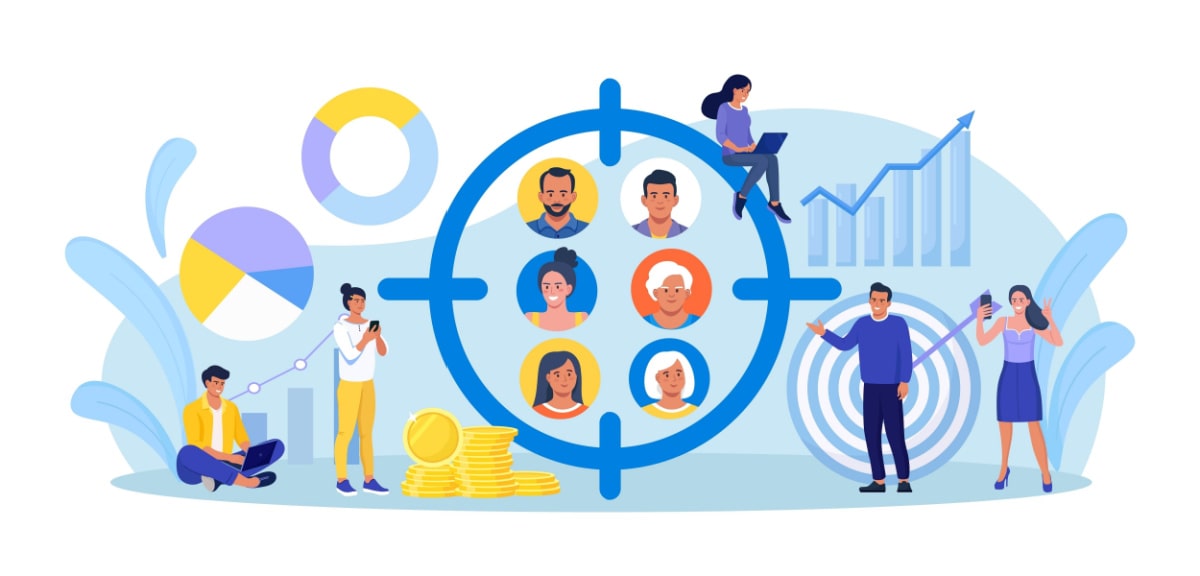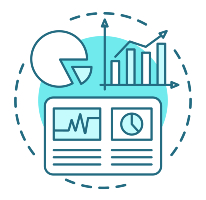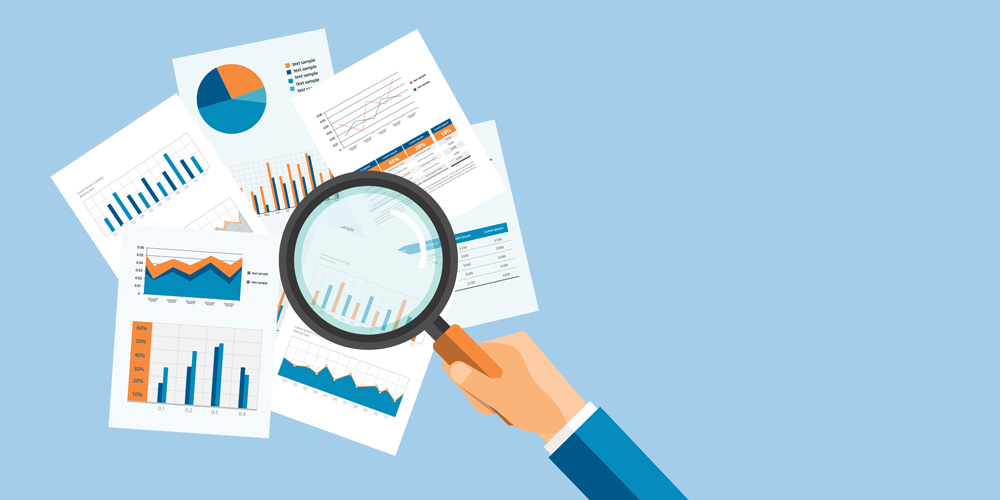Social media KPIs help brands analyze their digital marketing campaigns. Thanks to them, companies understand the reasons for their successes and failures on social networks. It is, therefore, a partner of choice for continuous improvement on digital channels. There are many relevant metrics today. This article proposes to retain only 5 of them: the most important ones! Before that, we will review 5 key statistics on the subject. Then we will clearly define this marketing concept.
Click here to discover the 6 dimensions of customer experience!
Sommary
5 statistics on social media KPIs
- With an estimated engagement rate of 96%in 2021, TikTok is by far the most engaging social network. For comparison, that same rate is only 0.83% on Instagram.
- Here’s the average “reach” rate for the two largest Meta networks in 2022: 34%on Instagram and 4.32% on Facebook. These percentages are down from 2021. Some content creation experts see this decrease as a gradual decline in “reach” on social networks.
- The average click-through rate on social networks is 21% in 2022. This corresponds to a loss of 0.19 percentage points compared to 2021.
- On average, 9%of the marketing budget of companies is spent on social networks.
- TikTok is the social network with the best growth over the last few years, with +822%between 2021 and 2022. More statistics and strategies on Social Media Marketing are available here!
What are the KPIs on social networks?
This is essential, as multi-channel presence and cross-media campaigns can drastically increase sales! Social media KPIs help brands understand their performance on these channels. In this case, these metrics seek, above all, to measure the awareness of companies online.
In addition to providing key information, the different KPIs determine if the objectives are reached on social networks. More generally, digital marketing KPIs are important allies for any marketer. In doing so, brands can use comprehensive information to define new content creation strategies. But that’s not all; KPI analysis is driving:
- new customer acquisition materials
- innovative lead-generation strategies
- and increased customer loyalty.

The top 5 social media KPIs
There are dozens and dozens of performance indicators for social networks. Moreover, their importance varies depending on the social network. For example, Facebook KPIs differ greatly from TikTok KPIs. The first one requires a high CTR, while the second one will focus more on the engagement of its users.
Nevertheless, 5 indicators stand out and are essential, regardless of the social network in question:
- engagement
- the reach
- the clickrate
- conversion
- and the evolution of the number of subscribers

Engagement, the first pillar of social media KPIs
The research of key metrics on social networks is based on 2 pillars. The first of these is user engagement. In concrete terms, we measure this engagement by examining the audience’s interactions with your content. This is often done through “likes,” comments, and shares. In other words, engagement is the ratio of interactions to your number of followers.

Nevertheless, the usefulness of engagement is wider than digital marketing. Indeed, good engagement also helps companies in their branding policy:
- Reputation : a credible and recognized brand online benefits from additional weapons to grab market share on new channels
- Relationship marketing : if engagement grants interesting quantitative data, analyzing the audience’s interactions with your content is just as interesting. Keep an eye on sentiment measurement. This metric can help companies better delineate their brand territory
Strong user engagement increases the reach of your content on social networks.

Reach, the second pillar of social media KPIs
Since we are on the subject of reach, let’s explain how this social media KPI is the second pillar of a good metrics analysis. The reach of a publication refers to the number of people who have seen the post on their news feed. There are two types of reach: organic reach and paid reach. As a general rule, organic reach is more important than its paid counterpart because the content of social networks lends itself more to organic exercise than paid.
As we have pointed out in our “Statistics” section, this metric has been decreasing lately. In the case of Facebook, the algorithm changes will have taken their toll on the once-high reach rates. For this reason, it is important to monitor the evolution of the reach of your posts closely. This is even more important for brands present on several social networks. Indeed, they can detect which media brings them the most visibility in the long term!
Reach indicates how many people have seen your post in their feed.

The click-through rate (CTR)
Let’s tackle the more technical, but not less important, social media KPIs. First of all, let’s take the click-through rate (CTR). This completes the engagement and the paid reach. Indeed, it focuses on the ratio between the number of clicks and the number of interactions with an ad. Its analysis is optimal when done in parallel with the research on the evolution of paid traffic.
Calculation of the CTR over a period n: (number of clicks on the ad / total number of impressions) * 100

Conversion rate
The conversion rate will surely be your most important KPI if you mainly use social networks for profit. This is also true for brands that see social media content as an irreplaceable lead acquisition tool.
In a few words, the conversion rate determines the share of leads that have contacted the brand out of the total number of leads. Thus, this metric refers as well to the following:
- online purchases
- use of the brand’s services
- content downloads
- etc.
Google Analytics? The ideal tool to calculate this rate and determine the impact of your social media posts

The growth rate of the number of followers
Finally, we will end this list of the 5 main social media KPIs with the obvious: the number of followers. As for the reach, the evolution of the number of followers requires special attention. This metric, as basic as it is, tells a long about the interest of the target audience towards the digital communication of a company. It is also a key indicator to detect a willingness to engage with this public.

The financial and time strategies are too different to be considered together. An interesting exercise to assess these evolutions is to cross-reference them with the editorial calendar. By doing so, you will determine which contents allow you to accumulate more and more followers! Companies should carefully distinguish between organic and paid growth to make this measurement.
Understanding why the number of followers increases or decreases leads to better digital marketing campaigns.

Sources
- Cucu, E. (2023). Social Media Reach Is Declining on All Major Platforms. Socialinsider.
- Dixon, S. (2022). Social media post engagement 2020-2021. Statista.
- Gitnux. (2023). The Most Surprising Social Media Marketing Roi Statistics And Trends in 2023
Posted in Marketing.